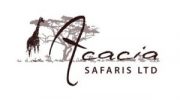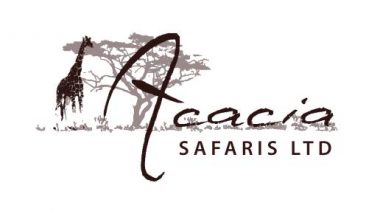How to reach Kenya by air – Kenya Travel Guide
How to reach Kenya by air – Kenya Travel Guide; There are many international airlines reaching Jomo Kenyatta International Airport in Nairobi. The major airlines that fly to Nairobi from Europe include British Airways (London), KLM (Amsterdam), SN Brussels Airlines (Brussels), and Swiss/Crossair (Zurich). From the USA, a connecting flight must be taken. Other international airlines that fly to Nairobi include El Al, Egyptair, South African Airways, Ethiopian Airlines, Emirates, Air Malawi, Air Zimbabwe, and Qantas. Only a couple of German airlines fly direct from Europe to Moi International Airport in Mombasa, from Mnich (LTU) or Frankfurt (Condor).
Best Travel Period – Kenya Travel Guide
The best time of the year to visit Kenya is the boreal summer, from July to September. A second choice is the boreal winter from January to February. There are two rainy seasons, the “long rains” from March to June and the “short rains” from October to December. Seasonal rains condition both road communications and some cyclic wildlife movements. Wildlife is more abundant in Masai Mara during the boreal summer.
Luggage – Kenya Travel Guide
We shall advise you to travel light as most of the trip will be on the safari vehicles. Remember your handbag for the trekking.
Documents and Visa entry fees
Visas to Kenya can be obtained directly on entry and costs 50 USD for 90 days. The passport must be valid for at least six months starting from the date of entry.
Health requirements – Kenya Travel Guide
It is advisable to have vaccinations against yellow fever, hepatitis, typhus, and tetanus. Risk of malaria is very reduced in Nairobi and the Highlands above 2,000 m, whereas the risk rises in the Indian Ocean coast. The malignant type of the illness, produced by Plasmodium falciparum, is the most frequent in Kenya. The usual prophylaxis consists of a combination of chloroquine and proguanil, or otherwise drugs that combine the two compounds. Prophylaxis with mefloquine (Lariam) is especially recommended for high-risk areas, given the presence of strains resistant to chloroquine and sulphadoxine-pyrimethamine.
Currency and Exchange rate
The national currency is the Kenya shilling (Ksh or KES). Each shilling is divided into 100 cents. In 2006 1 USD is exchanged at the average rate of 73 Ksh. It is a good idea to carry cash and traveler cheques in US dollars. The most widely used are American Express, Thomas Cook and Citibank. Restaurants, hotels, lodges and big shops accept the major credit cards.
What to dress
The dress is mainly informal and should be comfortable as well as practical. Something warm should be brought along for early morning and evenings. Safari clothes are available from hotels/lodges/camps.
Most Popular Kenya Wildlife Safari Ideas / Kenya Safaris Tour Options
- 3 days Samburu Safari Kenya Wildlife Tour
- 6 days Maasai Mara Kenya Wildlife Safari
- 6 Days Kenya Wildlife Safari
- 7 Days African Big Five Safari Kenya Wildlife Tour
- 7 Days Kenya Wildlife Safari
- 7 Days African Big Five Safari Kenya Wildlife Tour
- 8 Day Magnificent Kenya Tours
- 8 Days Kenya Wildlife Safari / Wildebeest Migration in Kenya
- 8 Days Kenya Wildlife Safaris Tour
- 9 Day Kenya Elegant Wildlife Safari / Kenya Wildlife Safaris Tour
- 11 Days Kenya Wildlife Safari / Wildlife Safaris in Kenya
- 12 Days Kenya Wildlife Safari Tanzania Wildlife Tour
Kenya Safari Destinations / Where to go for Wildlife Safaris in Kenya?
Maasai Mara National Reserve: Masai Mara is the most famous and most visited reserve in Kenya. Since it is protected as a reserve and not as a national park, Masai Mara is not managed by Kenya Wildlife Service but by the local authorities, namely District Councils. The protection of this area, among other factors, favoured re-population of the territory by the Maasai tribes, who by virtue of the reserve status were put in charge of the reserve’s management through the District Councils. Read More…
Amboseli National Reserve Kenya: Amboseli lies immediately North West of Mt. Kilimanjaro, on the border with Tanzania. Amboseli was established as a reserve in 1968 and gazetted as a National Park in 1974. The Park covers 392 kms and forms part of the much larger 3,000 Kms Amboseli ecosystem. Large concentrations of wildlife occur here in the dry season, making Amboseli a popular tourist destination. Read More…
Samburu National Reserve Kenya: Samburu, Buffalo Springs and Shaba are the most remote and inaccessible among the popular reserves located in Northern Kenya along the banks of the Ewaso Ngiro river. Shaba, the less visited of the three, is also the largest, with a total extension of 239 km. Samburu and Buffalo Springs are similar in surface area, 165 km and 128 km respectively. The area has been traditionally inhabited by the Samburu people, a nomad paranilotic tribe closely related to the Maasai. Read More…
Lake Nakuru National Park: Lake Nakuru is a very strong alkaline lake 62 kms in extent. Since its gazetting in 1968 as a national park, both authorities and conservation organisations have kept on winning the battle to private property and human settlings, further broadening the park limits in 1968 and 1974 to its current extension of 188 kms. The park is easily accessible, since Nakuru is the fourth city in the country and the headtown of the Rift Valley. The park covers the lake and a land strip around the northern, Read More…
Aberdare National Park: Created in 1950, Aberdare National Park is located in the Central Highlands. The landscape is made by the moorland, peaks and forest of the Kinangop Plateau in the South and the Salient rain forest in the East. Read More…
Mount Kenya National Park: Mt. Kenya is an imposing extinct volcano dominating the landscape of the Kenyan Central Highlands, east of the Rift. Mt. Kenya lies about 140 km North, North-East of Nairobi with its Northern flanks across the Equator. Read More…
Kenya Safari Attractions / What to See on A Kenya Wildlife Safari?
ABERDARE RANGES; The ranges are 343 kms from Nairobi and are at an altitude of 2500-4000 ft occupying an area of 104 sq. kms. The Aberdare National Park is part of the Aberdare Mountain Range. Deep valleys, streams and rivers as well as cascading waterfalls feature in this region. Read More…
BIG FIVE; Amboseli National Park is one of Kenya’s most prevalent parks on account of the astonishing view it exhibits of nearby Mount Kilimanjaro, the world’s highest freestanding mountain. If you travel to Amboseli National Park, be sure of finding flocks of elephants with the unforgettable views of Kilimanjaro. Read More…
KENYA BEACH HOLIDAYS; This is usually the last part of your safari around Kenya. After spending time in the bush on safari, take a few days to relax on the beaches and catch a tan before heading home. Read More…
MOUNT KENYA; The region affords an excellent game viewing. Examples include the black and white Colobus and Sykes bushbuck, elephant, monkeys, buffalo, black rhino, waterbuck, genet cat and the bongo, Read More…
MOUNTAIN MERU; A commonly accepted area as the setting where Elsa, Joy Adamson’s lioness, was returned to the wild (Born Free 1960 – Written by Joy Adamson). Meru provides an astonishing combination of incomparable habitats. On the lower slopes of Mt. Kenya, Read More…
NAIROBI CITY; This is a great vacation site where you can get your films developed, wander through bookshops and send off your postcards. This Safari vacation in Nairobi is almost inevitable. Stay in Nairobi, you’ll find a town full of hustle and bustle, Read More…
WILDLIFE AND SCENERY; This is where the refreshing waters of the Ewaso Ngiro River run through Samburu and draw towards plenty of wildlife – including lions, giraffes elephants and zebras. Leopards are also regularly spotted. Read More…
THE GREAT RIFT VALLEY; Visit one of the wonders of the world on a Great Rift Valley tour. The valley forms a wide trench (about 5400 miles long) down the length of Africa that is visible from the moon. When planning to have a vacation at the Great Rift Valley in Kenya, Read More…
TREKKING SAFARIS; Maralal National Reserve is one of Kenya’s little-known treasures. Tucked away in the center of the country amidst the Ol Doinyo Lenkiyo Mountains. Maralal completely surrounds the Samburu town of the Maralal within the Reserve’s boundaries. It is one of the best places for trekking safaris, Camel safaris, and walking safaris. Read More…


